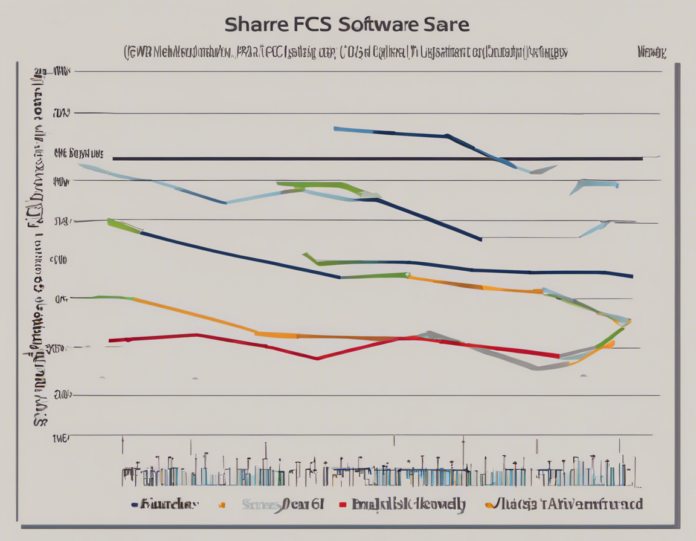Fashion Design Software (FCS) has revolutionized the fashion industry by streamlining design processes, enhancing creativity, and improving efficiency. FCS software enables designers to bring their visions to life, from sketching to production. This guide will explore the benefits of FCS software, key features to look for, and tips for maximizing its potential.
Understanding FCS Software
Fashion Design Software, also known as FCS software, is a specialized tool that helps designers create, visualize, and produce apparel and accessories. FCS software is equipped with features like CAD (Computer-Aided Design), digital pattern-making, virtual prototyping, and color palette management. This software is used by fashion designers, pattern-makers, product developers, and manufacturers to streamline the design process and bring innovative ideas to market faster.
Benefits of FCS Software
1. Enhanced Creativity
FCS software allows designers to experiment with colors, fabrics, and patterns digitally, without the need for physical samples. This promotes creativity and enables designers to quickly visualize and iterate on their ideas.
2. Improved Efficiency
By digitizing the design process, FCS software reduces manual work, such as hand sketching and pattern drafting, saving time and effort. Automated features like grading, marker-making, and 3D rendering streamline operations and accelerate production timelines.
3. Precision and Accuracy
With FCS software, designers can create precise patterns, sample garments, and visualize final products in 3D. This ensures accuracy in sizing, fit, and design details, leading to fewer samples and prototypes being produced.
4. Cost-Effective Prototyping
Virtual prototyping in FCS software allows designers to create lifelike 3D models of their designs, reducing the need for physical samples and minimizing material waste. This cost-effective approach speeds up the design iteration process and reduces production costs.
Key Features of FCS Software
1. CAD Tools
Look for FCS software that offers robust CAD tools for sketching, drawing, and creating digital patterns. CAD tools should be user-friendly, intuitive, and customizable to meet the designer’s specific needs.
2. Virtual Prototyping
Virtual prototyping capabilities allow designers to visualize their designs in 3D, simulate fabric draping, and refine garment fit and proportions before production. This feature enhances design accuracy and reduces the need for physical samples.
3. Pattern Grading
Pattern grading functionality in FCS software enables designers to scale their patterns across different sizes systematically. This feature simplifies the sizing process and ensures consistency and accuracy in garment production.
4. Color and Fabric Libraries
Having access to extensive color palettes and fabric libraries within FCS software enables designers to experiment with different combinations, textures, and finishes. This feature helps in creating visually appealing and cohesive collections.
5. Collaboration Tools
Look for FCS software with built-in collaboration tools that allow designers, pattern-makers, and manufacturers to share and review designs, annotations, and comments in real-time. Collaboration tools streamline communication and facilitate seamless workflow management.
Tips for Maximizing FCS Software Potential
1. Training and Education
Invest in training programs or workshops to enhance your proficiency in FCS software. Continuous learning and upskilling will help you leverage advanced features and functionalities effectively.
2. Customization and Personalization
Tailor the FCS software to suit your specific design requirements and workflow preferences. Customize shortcuts, templates, and libraries to optimize efficiency and productivity.
3. Stay Updated
Stay informed about software updates, new features, and industry trends related to FCS software. Regularly explore tutorials, forums, and resources to stay ahead of the curve and make the most of the software’s capabilities.
4. Integration with Other Tools
Integrate FCS software with other design tools, such as Adobe Creative Suite or PLM (Product Lifecycle Management) software, to streamline the design-to-production process. Seamless integration enhances data flow, collaboration, and efficiency.
5. Feedback and Iteration
Seek feedback from peers, mentors, or clients on your FCS software designs. Use their inputs to iterate on your designs, refine details, and enhance overall quality before finalizing for production.
Frequently Asked Questions (FAQs)
1. What is the difference between FCS software and generic design software like Adobe Illustrator?
While Adobe Illustrator is a versatile design tool, FCS software is tailor-made for fashion design with specialized features like pattern-making, virtual prototyping, and fabric simulation.
2. Can FCS software be used by amateur designers and students?
Yes, many FCS software offer student versions or free trials for beginners to learn and explore fashion design concepts. These tools are user-friendly and can benefit aspiring designers.
3. How important is it for fashion companies to invest in FCS software?
Investing in FCS software is crucial for fashion companies looking to enhance creativity, efficiency, and accuracy in their design processes. It allows for faster product development and better collaboration among team members.
4. Do FCS software support integration with e-commerce platforms for direct product visualization?
Some advanced FCS software offer integration with e-commerce platforms, enabling designers to showcase their designs online with realistic 3D visualization for customers to preview before purchase.
5. Is training necessary to use FCS software effectively, or can designers learn on their own?
While designers can learn basic functions of FCS software on their own, formal training or workshops can help them master advanced features, improve workflow efficiency, and stay updated on industry best practices.
In conclusion, Fashion Design Software (FCS) is a powerful tool that empowers designers to unlock their creative potential, streamline processes, and bring innovative designs to life. By understanding the benefits, key features, and tips for maximizing FCS software’s potential, designers can leverage its capabilities to stay ahead in the competitive fashion industry.


Recent comments